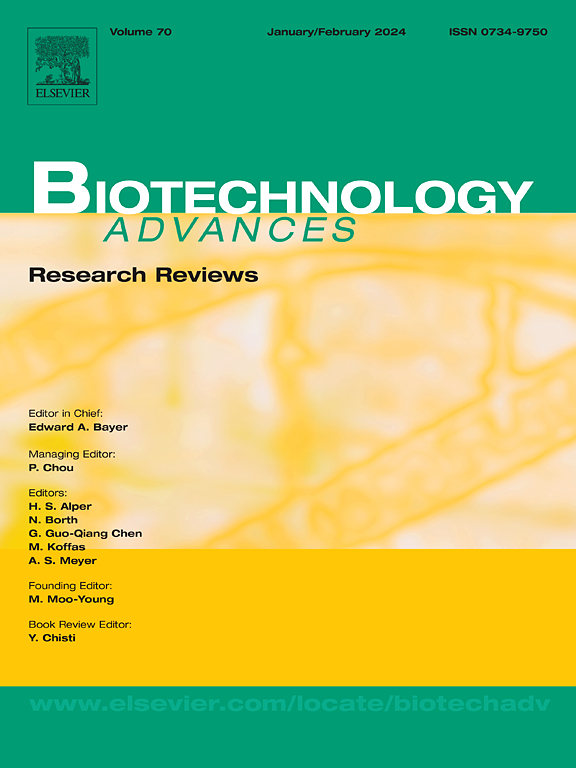Engineering catalytically promiscuous enzymes to serve new functions
IF 12.1
1区 工程技术
Q1 BIOTECHNOLOGY & APPLIED MICROBIOLOGY
引用次数: 0
Abstract
Catalytic promiscuity in enzymes refers to their ability to catalyze multiple chemically distinct reactions in addition to their native activity. The increasing discovery of additional enzymes exhibiting catalytic promiscuity has underscored the significance of this trait in nature. The catalytic promiscuity of enzymes offers new avenues for functional redesign. Through protein engineering, existing enzymes can be modified to expand their natural catalytic boundaries. Furthermore, de novo designed artificial enzymes can achieve novel enzymatic reactions, broadening the scope of enzyme-catalyzed applications. Given that catalytic promiscuity plays a fundamental role in enzyme evolution, comprehensive research on its origins and influencing factors is essential. In this review, we comprehensively examine the factors influencing catalytic promiscuity, including variations in substrate binding modes in pre-reaction states, the instability of key high-energy intermediates, and the roles of critical residues in catalytic mechanisms. Moreover, altering the enzyme's catalytic environment can also induce novel types of catalytic reactions, such as light-induced promiscuous reactions catalyzed by cofactor-dependent oxidoreductase enzymes. Additionally, we summarize the current protein engineering technologies and strategies aimed at enhancing the activity and stereoselectivity of target enzymes to meet industrial requirements.
工程催化混杂酶服务于新的功能。
酶的催化混杂性是指酶除了具有天然活性外,还具有催化多种不同化学反应的能力。越来越多的发现其他酶表现出催化乱交强调了这一特性在自然界的重要性。酶催化的混杂性为功能的重新设计提供了新的途径。通过蛋白质工程,可以修改现有的酶,以扩大其天然催化边界。此外,重新设计的人工酶可以实现新的酶促反应,扩大酶催化的应用范围。鉴于催化乱交在酶的进化过程中起着重要的作用,对其起源及其影响因素的综合研究是必要的。在这篇综述中,我们全面研究了影响催化杂乱性的因素,包括反应前状态下底物结合模式的变化、关键高能中间体的不稳定性以及关键残留物在催化机制中的作用。此外,改变酶的催化环境还可以诱导新型的催化反应,例如由辅因子依赖性氧化还原酶催化的光诱导混杂反应。此外,我们还总结了目前旨在提高靶酶活性和立体选择性以满足工业需求的蛋白质工程技术和策略。
本文章由计算机程序翻译,如有差异,请以英文原文为准。
求助全文
约1分钟内获得全文
求助全文
来源期刊

Biotechnology advances
工程技术-生物工程与应用微生物
CiteScore
25.50
自引率
2.50%
发文量
167
审稿时长
37 days
期刊介绍:
Biotechnology Advances is a comprehensive review journal that covers all aspects of the multidisciplinary field of biotechnology. The journal focuses on biotechnology principles and their applications in various industries, agriculture, medicine, environmental concerns, and regulatory issues. It publishes authoritative articles that highlight current developments and future trends in the field of biotechnology. The journal invites submissions of manuscripts that are relevant and appropriate. It targets a wide audience, including scientists, engineers, students, instructors, researchers, practitioners, managers, governments, and other stakeholders in the field. Additionally, special issues are published based on selected presentations from recent relevant conferences in collaboration with the organizations hosting those conferences.
 求助内容:
求助内容: 应助结果提醒方式:
应助结果提醒方式:


